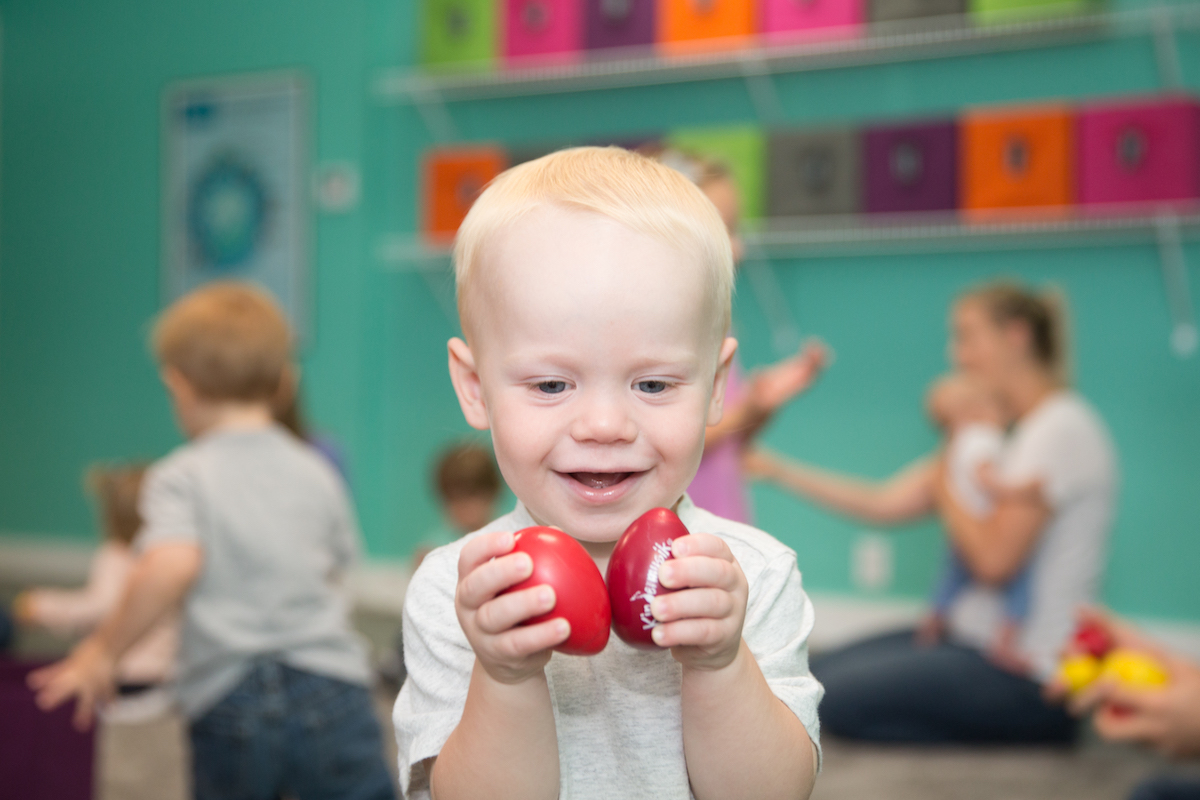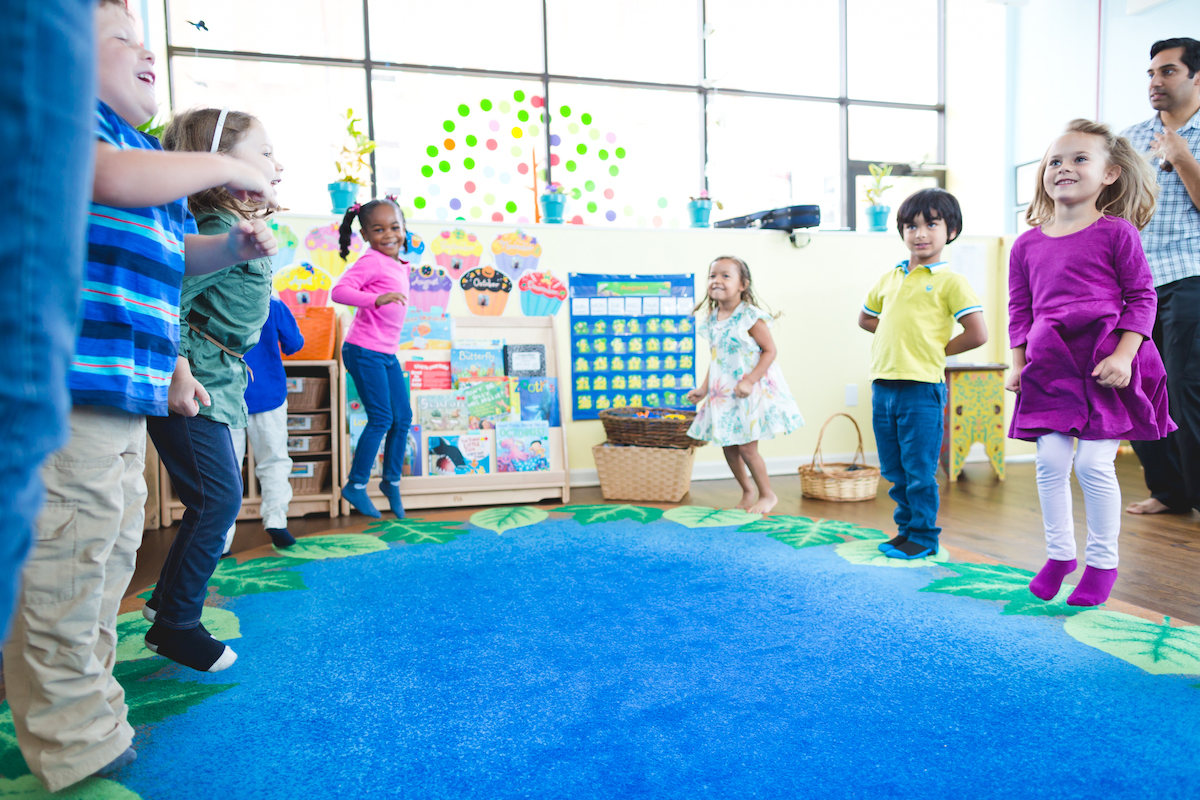You know that thing that makes you want to rock, sway, clap, or tap to the music? That’s steady beat—the ongoing, repetitive pulse that occurs in songs, chants, and rhymes.
But it’s more than just an ideal skill for dance or instrument lessons—steady beat is a critical aspect of early childhood development that affects everything from walking, to reading, to dribbling a basketball.
Even in-utero, babies respond to the steady beat of their mother’s heart or the songs she sings. Starting at two years old, you can begin to assess whether or not a child can internalize steady beat in an age-appropriate way, or whether they need more practice in order to fuel success in school and beyond.
First, let’s look at the science behind steady beat and its practical benefits.

4 Ways Steady Beat Fuels Development
- Cognitive Development: Engaging with steady beat helps children develop important cognitive skills such as pattern recognition, memory, and attention. These are great stepping stones to learning to count and memorizing sight words.
- Language and Literacy: A strong sense of rhythm has been linked to improved language development and literacy skills. The rhythmic patterns of music mirror the patterns of language, helping children enhance their phonological awareness—a key predictor of early reading success. In fact, a study conducted by Northwestern University suggests that preschoolers between ages 3 and 4 who can demonstrate beat synchronization show stronger reading preparedness.
- Motor Skills: Keeping a steady beat requires control which, in turn, supports the development of fine and gross motor skills. Activities like tapping egg shakers together build hand strength and precision (hello, handwriting!), while circle dances increase whole-body coordination (think: balance and safety).
- Social-Emotional Benefits: Group musical play often requires moving and grooving in sync, which supports early social skills like cooperation, turn-taking, and empathy. Building these relationship foundations early is directly linked to positive academic and general growth.
So, we know steady beat feeds into developmental milestones, but what about how it’s affecting your child or student? The next step is assessing competency and determining how to take it to the next level.
4 Ways to Assess and Increase Steady Beat Competency in Children
While babies can express steady beat competency, when it comes to school readiness, looking for success between ages 3-5 is key.

- Observe their natural reactions to music. Do they tap, clap, or dance in time?
- See if they can match your steady beat. Clap a steady beat while saying, “clap, clap, clap…” and encourage them to clap with you. Can they match your beat?
- Notice how they play with instruments. Provide simple instruments (like egg shakers) or homemade ones (like a pot and wooden spoon) to play along to the music. Can they play along to the beat closely or exactly?
- Test call and response. Sometimes called “echo games,” encourage your child(ren) to repeat your words to mimic steady beat through language rather than movement. The chant “Parrot Talk” on the free Kindermusik app is an easy and fun activity to try.
Here’s the most important part of any assessment: make it fun! Musical play should be naturally joyful—not forced— so that even when you’re silently observing, everyone is having a good time.
Remember, in all aspects of whole-child development, it’s about progress not perfection.
Some children may be able to recognize steady beat and be able to express it externally around two or three years old, while others may develop this skill later. Encouraging learning steady beat in joyful musical play is one stress-free way to meet those school readiness checklists head-on.
Want more tools to help your child learn steady beat? Find a Kindermusik class near you or check out our classroom kits for teachers.

